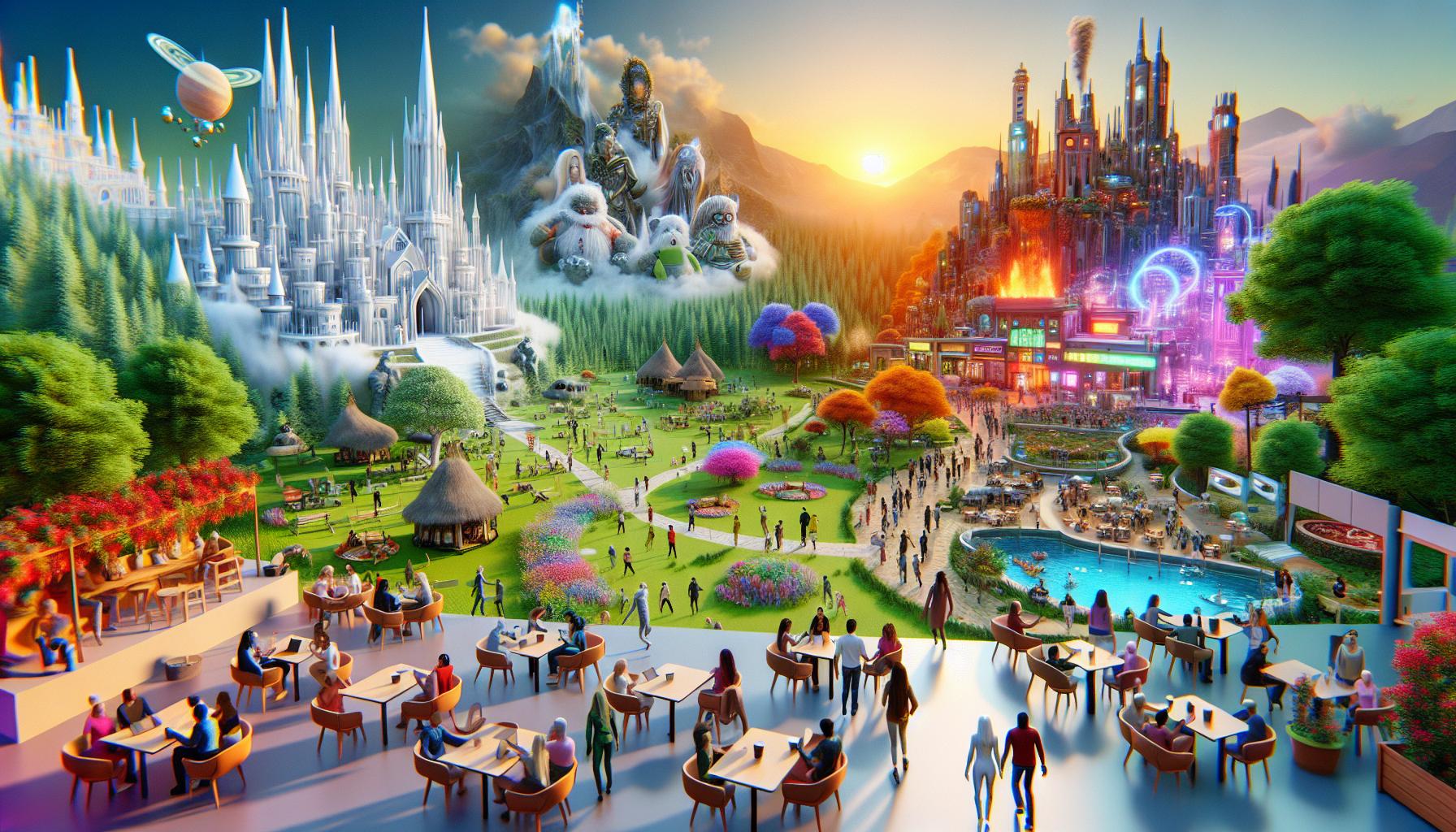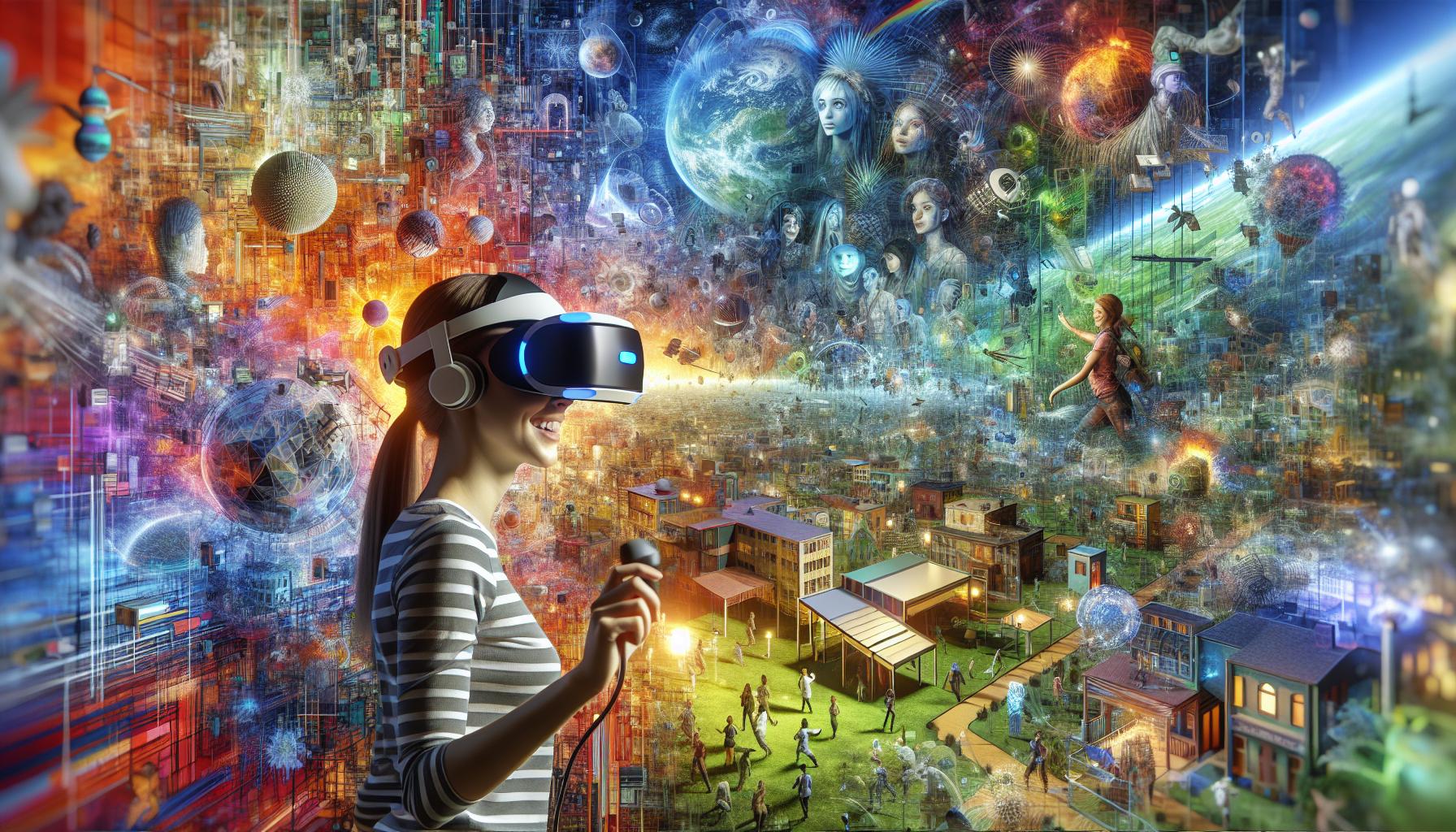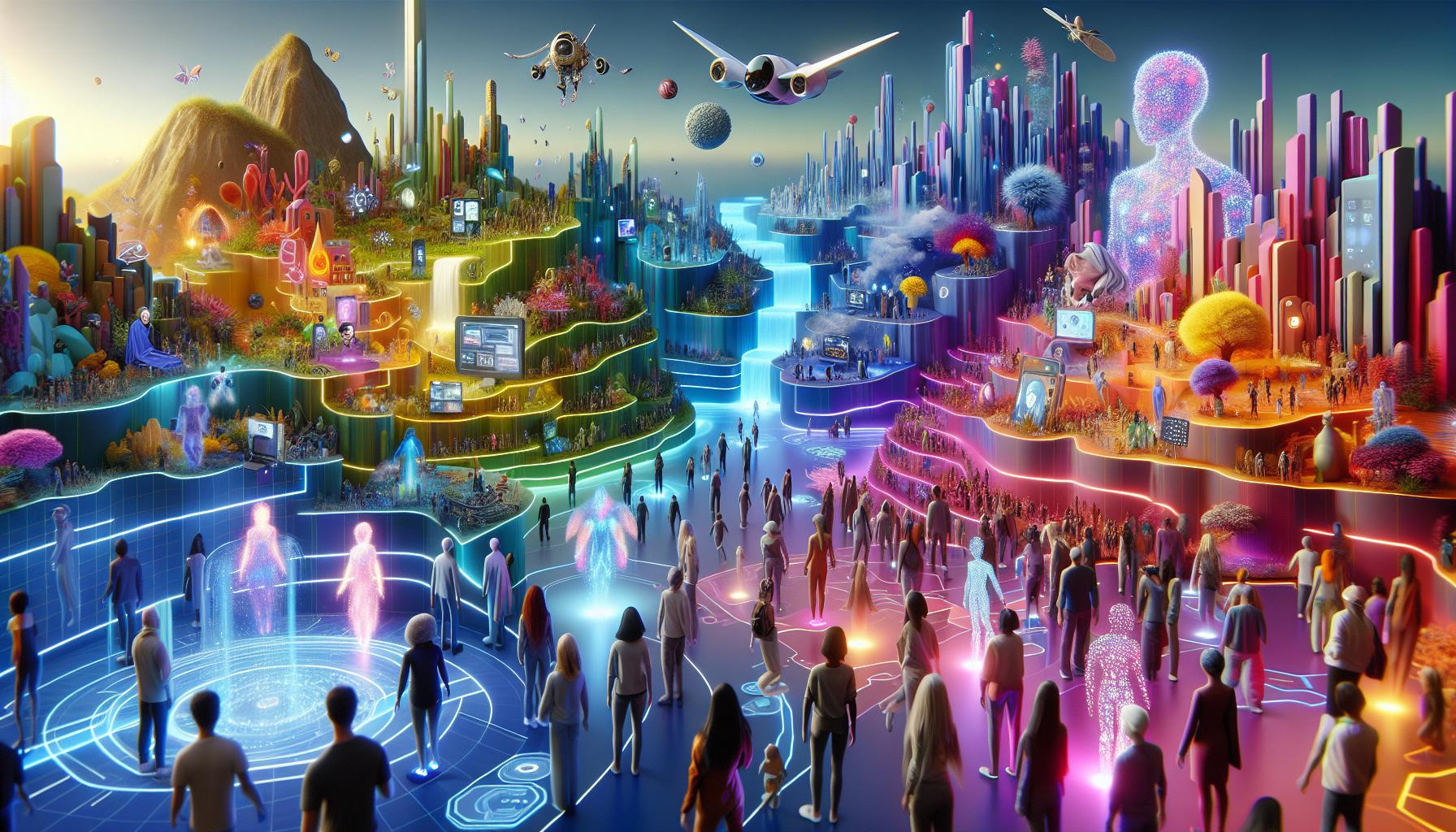Key Takeaways
- Diverse Experiences: Virtual worlds span gaming, social interaction, and education, offering unique experiences that cater to various interests and age groups.
- User-Generated Content: Many platforms emphasize creativity by allowing users to create, share, and modify content, enhancing engagement and personal expression.
- Technological Advancements: The use of 3D graphics, VR, and AR technologies enriches the immersive experience, encouraging deeper user involvement.
- Community Focus: Strong communities within virtual worlds promote collaboration, social interactions, and real-time communication through various tools and features.
- Accessibility Features: An intuitive user interface and accessibility options are crucial for ensuring an enjoyable experience for all users, catering to different needs and devices.
- Emerging Trends: New virtual worlds are introducing decentralized economies and cross-platform access, making it easier for users to connect and engage across different environments.
In today’s digital age, virtual worlds have transformed the way people connect, play, and explore. These immersive environments offer endless possibilities, from gaming adventures to social interactions, allowing users to escape reality and dive into captivating experiences. As technology advances, the popularity of virtual worlds continues to soar, attracting millions of users eager to discover what lies beyond the screen.
Whether it’s building a dream home in a pixelated paradise or embarking on epic quests with friends, virtual worlds provide a unique blend of creativity and community. This article delves into a diverse list of virtual worlds, highlighting their distinctive features and what makes each one worth exploring. For anyone curious about the vast landscape of virtual experiences, this guide serves as a gateway to a world of imagination and connection.
List of Virtual Worlds
Virtual worlds serve as immersive digital environments where users engage in social interactions, gaming, and creative activities. These platforms foster user-generated content, enabling participants to build, interact, and explore unique landscapes.
The technology behind virtual worlds varies, incorporating 3D graphics, artificial intelligence, and real-time interactions. Users navigate through avatars, which represent them within these dynamic spaces. Various genres exist, each providing distinct experiences:
- Massively Multiplayer Online Games (MMOs): Games like World of Warcraft allow thousands of players to interact in expansive environments.
- Social Platforms: Environments such as Second Life focus on socializing, creating, and exploring user-generated content.
- Educational Spaces: Platforms like Minecraft: Education Edition enhance learning through interactive quests and collaborative projects.
Popularity continues to surge as users seek creative outlets and community engagement. Advances in hardware and internet connectivity enhance these experiences, promoting broader access. Virtual worlds not only entertain but also empower users to forge connections, develop skills, and explore imaginative realms.
Popular Virtual Worlds

Various virtual worlds cater to users looking for immersive experiences in social interactions, gaming, and education. Each world offers distinct features that enhance user engagement and creativity.
Social Virtual Worlds
Social virtual worlds create environments where users can interact, communicate, and build relationships. Examples include:
- Second Life: Users can create avatars, build homes, and participate in events, emphasizing user-generated content.
- VRChat: This platform allows users to socialize in virtual spaces with customizable avatars, integrating games and activities.
- IMVU: Users design avatars and interact in various chat rooms, focusing on user creativity in socializing.
Gaming Virtual Worlds
Gaming virtual worlds provide immersive experiences that engage players in collaborative or competitive gameplay. Notable examples include:
- World of Warcraft: A leading MMO where players embark on quests, raid dungeons, and form guilds in a richly developed fantasy universe.
- Fortnite: Combines battle royale gameplay with social features, allowing players to build, fight, and connect with friends in vibrant worlds.
- Roblox: Users can create and share games, fostering creativity among young developers in a platform that scales across various genres.
- Minecraft: Education Edition: Facilitates learning through creative building and problem-solving activities in a blocky, open world.
- The Metaverse: Integrates various educational experiences, from immersive history lessons to interactive science labs, encouraging collaborative learning.
- Active Worlds: Hosts educational programs and simulations, allowing users to create their own environments and explore new concepts in a virtual space.
Emerging Virtual Worlds

Emerging virtual worlds offer unique experiences that enhance user engagement and creativity. These platforms leverage advanced technology to create diverse environments for social interaction, gaming, and education.
Characteristics of Newer Virtual Worlds
- Interactivity: Newer virtual worlds emphasize real-time interactions, enabling users to communicate and collaborate seamlessly.
- User-Generated Content: These platforms encourage users to create and share content, fueling creativity and personal expression.
- Immersive Experiences: Incorporating virtual reality (VR) and augmented reality (AR), newer virtual worlds provide engaging and immersive environments.
- Cross-Platform Access: Supporting multiple devices, these worlds allow users to connect from desktops, consoles, and mobile devices without losing functionality.
- Dynamic Economies: Virtual worlds feature robust economies with virtual currencies, enabling users to trade, purchase, and sell digital assets.
- Decentraland: A decentralized virtual world that allows users to purchase, develop, and sell parcels of land using cryptocurrency, fostering an extensive user-driven economy.
- Somnium Space: An open-world VR platform where users can explore, socialize, and build within a fully immersive three-dimensional environment.
- VRChat: A highly interactive social platform that emphasizes user-created experiences, allowing participants to create custom avatars and worlds.
- Hypergrid: A network of virtual worlds that enables users to travel between different environments seamlessly, promoting exploration and creativity.
- Roblox: More than just a game, it empowers users to create and share their games and experiences, fostering a vast community of developers and players alike.
Features to Consider

Understanding the features of virtual worlds enhances user experience and enjoyment. Several critical aspects, such as user interface, community engagement, and interactivity, deserve close attention.
User Interface and Accessibility
User interface (UI) plays a crucial role in how users navigate virtual worlds. An intuitive UI ensures users can easily access features and tools, enhancing overall engagement. Accessibility options are paramount, as they cater to diverse user needs. Features like customizable controls, language options, and assistive technologies enrich the experience for users with disabilities. Popular platforms often prioritize responsive design to accommodate various devices, ensuring seamless experiences across desktops, tablets, and VR headsets.
Community and Interactivity
Community and interactivity foster the social fabric of virtual worlds. A strong community encourages collaboration and shared experiences among users. Features such as chat systems, forums, and events strengthen connections, allowing participants to communicate in real-time. Interactivity includes the ability to create, share, and modify content, which empowers users to contribute actively. Games that promote team-based activities or challenges enhance competition and cooperation, making the virtual environment more dynamic and engaging. Each platform’s emphasis on community aspects can significantly influence user retention and satisfaction.

